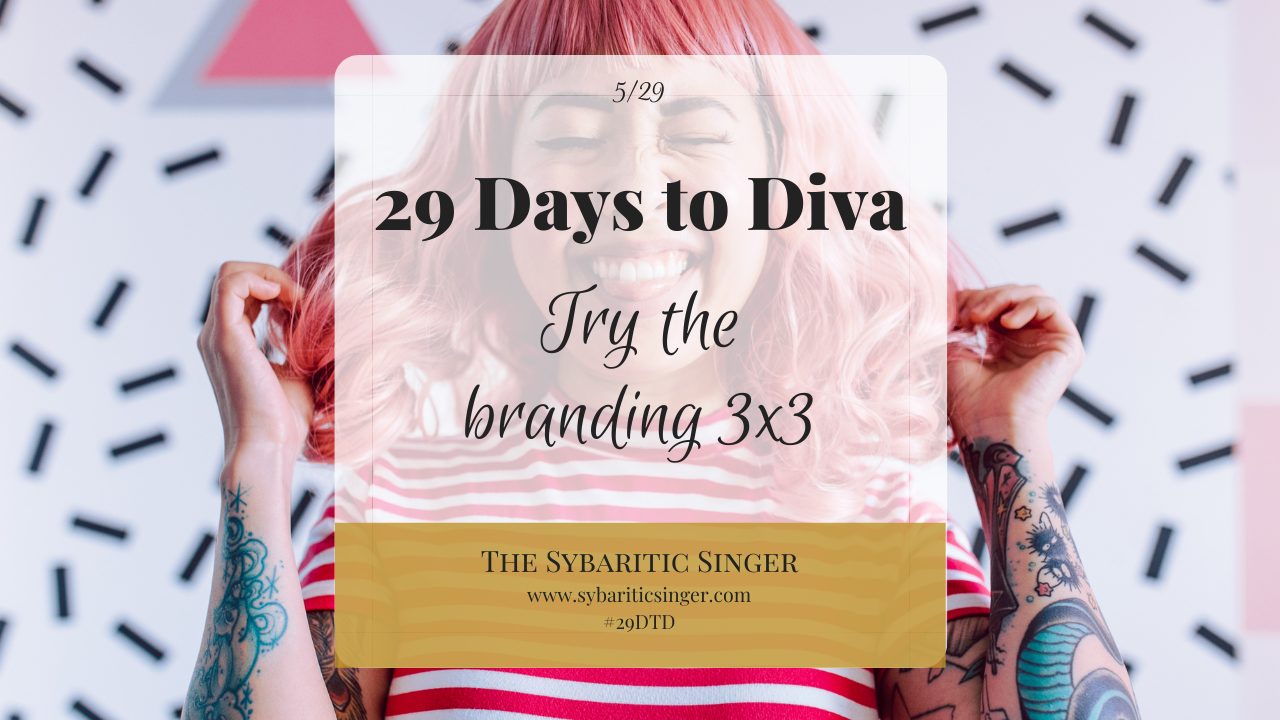During the fall semester, I am one of the professors for the Building a Brand and Portfolio career development course which is part of the Peabody Conservatory’s Breakthrough Curriculum. It is such a pleasure to work with my students to help them build their business and entrepreneurial skills. This course specifically focuses on getting the students’ promotional materials ready. Naturally, we talk about “what the heck is branding?” I’ve been writing on the subject and helping my individual coaching clients with this same question for years.

Your 29 Days to Diva – Day 5 Assignment: Try Megan’s Branding 3×3 Exercise
While in the course, we focus on identifying your core mission and your values and then working to tell that publicly. The questions we have them work with are “What?”, “Why?”, and “So what?” So, let’s try that out for a moment before we get into my own 3×3 exercise.
- What do you do as an artist?
- (Are you surprised that this part feels slightly tricky to put into words?)
- Why?
- Why are you passionate about the work you’re doing?
- So what?
- I love these particular questions from Dr. Zane Forshee: “Why does it matter to the world? Why does it matter beyond your interest? Why might other people connect to it?”
Megan’s branding 3×3
Sometimes I work with clients who have already done a lot of work on these questions. They’re curious if they can do anything else to help freshen up their branding or help them think about it in a different way. I like to introduce them to my branding 3×3 exercise. It works like this:
List three topics that you’re wildly passionate and/or knowledgeable about:
The next group of three is a little more nuanced. Describe to me three different feelings/thoughts you want people to experience when they interact with your artistic practice/work.
For example, Client A is passionate about Boston, early music and historical performance practice, and somatic experiencing therapy. They want people to feel grounded in the present moment, introduced to the musical traditions of the distant musical past, and an effervescence about music when audiences interact with their work.
I encourage you to let this information guide the copy you write about yourself and your work, whether that’s bios, program notes, website ‘about’ pages, recital descriptions, artist statements, grant narratives, etc. It’s deceptively straightforward so that it’s not hard to remember later. When you get clarity on what you want people to feel/think when they interact with your work, it becomes that much easier to check in with those 3 items at the outset of any rehearsal, performance, or project. If Client A wants people to experience effervescence about music, they can ask themselves, “How am I behaving or interacting during this rehearsal to accomplish that goal?” They can also ask themselves how they’re being a good artist-citizen in Boston through the performances or projects they create.
Your brand goes beyond words
It is true that you have a brand whether you’ve thought about these things or not. Branding isn’t just whether you have a style guide, brand colors, or a snazzy logo. I firmly believe that we teach other people how to think about us. It’s a bummer if you let that opportunity pass you by without thinking about it intentionally. Your brand goes beyond the words that you say about yourself. It’s about how you put your values into action, how you communicate with others, how you make other people feel when they interact with you or your work.
